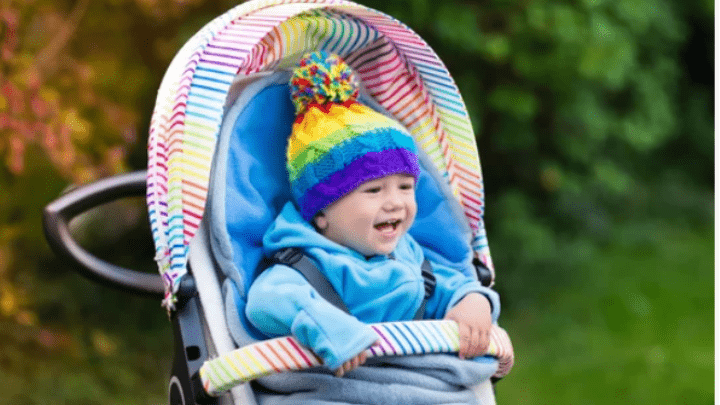Introduction
Hey there, parents and caregivers! Have you ever noticed how kids seem to have endless energy? They're constantly on the move, exploring the world around them. And as they do, their little bodies are developing important motor skills that will serve them well as they grow.
That's where trikes come in. These three-wheeled wonders are more than just a fun way for kids to get around. They're actually a valuable tool for developing motor skills in children. Whether it's pedalling, steering, or balancing, riding a trike engages multiple muscle groups and helps kids build strength, coordination, and balance.
But don't just take my word for it. In this article, we'll dive into the science behind why trikes are so beneficial for kids and explore some of the specific ways they can help your child's motor skills development. So grab a seat and get ready to learn all about the incredible benefits of trikes for your little ones.
Trikes Help Build Leg Strength and Balance
Riding a trike is not only fun for kids, but it also offers numerous developmental benefits. One of the key advantages of riding a trike is that it helps build leg strength and balance in children. As they pedal their way forward, they are using their leg muscles to propel themselves, which in turn strengthens those muscles over time. This increased leg strength can have long-term benefits for other physical activities and sports as well. Additionally, riding a trike requires a certain level of balance and coordination, as kids need to learn how to steer and maintain stability while moving. By practising these skills on a trike, children are laying the foundation for better balance and coordination in various aspects of their lives. Whether it's walking confidently or participating in sports, the leg strength and balance developed from riding a trike can greatly contribute to a child's overall physical development.
Hand-Eye Coordination Improves With Trike Riding
When children ride trikes, they have to use their hands and eyes together to steer and navigate. This helps improve their hand-eye coordination, which is an essential skill for various activities, including sports, playing musical instruments, and even everyday tasks like handwriting and tying shoelaces. By gripping the handlebars, turning them in the desired direction, and keeping their balance on the trike, kids are developing their ability to synchronise their hand movements with what they see. This coordination is crucial for spatial awareness and motor skills development. Trike riding provides a fun and engaging way for children to enhance their hand-eye coordination while enjoying the outdoors and staying active.
Core Muscles Get a Workout While Riding a Trike
When children ride a trike, they engage their core muscles in a way that promotes strength and stability. The act of pedalling requires the use of abdominal and back muscles to maintain balance and propel the trike forward. This strengthens the core muscles, which are essential for maintaining good posture and stability in everyday activities. Additionally, steering the trike requires coordination between the arms, core, and legs, further enhancing motor skills development. Riding a trike provides an enjoyable way for children to exercise their core muscles, promoting healthy physical development.
Trikes Teach Kids Steering and Navigation
One of the key benefits of trikes for kids is that they teach them important skills in steering and navigation. Riding a trike requires children to learn how to control their direction and navigate their way around obstacles. This helps to develop their hand-eye coordination and fine motor skills, as they have to use their hands to steer the handlebars and their feet to pedal and balance. By mastering the art of steering and navigation on a trike, children are better prepared for riding bicycles and other wheeled toys in the future, as they have already developed the necessary skills to control their movement and stay safe on the road. Additionally, learning to navigate on a trike also encourages children to be more aware of their surroundings and to make decisions about which route to take, further enhancing their cognitive and problem-solving abilities. Overall, trikes provide a fun and interactive way for children to develop these important motor skills while enjoying the outdoors.
Social Skills Are Developed Through Trike Play
When children engage in trike play, they not only develop their motor skills, but they also have the opportunity to enhance their social skills. Riding a trike often involves interaction with other children, whether it's racing with friends, taking turns, or simply riding together. This social interaction helps children learn important skills such as communication, cooperation, and problem-solving. They have to learn how to navigate the space and negotiate with others, which promotes the development of empathy and understanding. Additionally, trike play can encourage teamwork and collaboration, as children may work together to create games or build ramps for their trikes. Overall, trike play provides a fun and interactive environment for children to develop and practise their social skills, setting them up for success in future social interactions.
Trikes Provide Opportunities for Imaginative Play
When it comes to children's toys, trikes are a great choice for promoting imaginative play. Unlike other ride-on toys, trikes offer a sense of freedom and independence, allowing children to explore their surroundings and create their own adventures.
Here are a few ways that trikes provide opportunities for imaginative play:
- Pretend Play: Children can pretend to be race car drivers, delivery drivers, or even superheroes on their trikes. They can create their own stories and scenarios, enhancing their creativity and imagination.
- Outdoor Exploration: Trikes encourage children to venture outdoors and discover new places. They can imagine themselves going on exciting journeys and exploring different environments, such as parks, sidewalks, or even their own backyard.
- Social Interaction: Trikes also provide opportunities for social interaction and cooperative play. Children can ride together, taking turns being the driver or the passenger. They can engage in role-playing games, developing their communication and social skills.
In addition to fostering imaginative play, trikes also offer numerous physical benefits for children, such as improving their balance, coordination, and gross motor skills. With their bright colours and fun designs, trikes not only provide entertainment but also support a child's overall development.
Conclusion
In conclusion, it's clear that trikes are not just a fun and exciting toy for kids, but also a valuable tool for their motor skill development. By riding a trike, children are able to improve their balance, coordination, and strength, all while enjoying the outdoors and having a blast.
Trikes provide a safe and controlled environment for kids to practise and refine their motor skills, allowing them to gain confidence and independence. Additionally, the physical activity involved in riding a trike promotes a healthy lifestyle and can contribute to overall physical fitness.
So, whether it's a classic tricycle or a more advanced pedal-powered trike, incorporating these wheeled wonders into a child's playtime can have numerous benefits for their motor skill development. Let's encourage our little ones to hop on their trikes and embark on a journey of growth and discovery! Check out our wide range of Playtime products here at For Your Little One.



